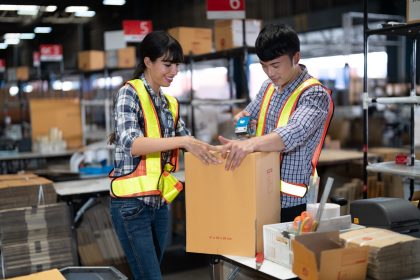
The holiday season is a magical time for shoppers and a booming one for businesses, but it inevitably leaves behind an aftermath every e-commerce retailer dreads—holiday returns. The surge in return requests post-holidays strains logistics, operational systems, and even customer relationships.
For e-commerce businesses that don’t handle returns effectively, the aftermath can lead to spiraling costs, disrupted workflows, and strained customer trust. However, for businesses willing to plan ahead and invest in smart strategies, holiday returns can even become an opportunity to improve operations and build long-term loyalty.
This blog explores the most common challenges of handling holiday returns and offers practical, actionable solutions to overcome them.
Handling High Volumes
For many businesses, the sudden spike in holiday returns can cause logistical challenges as employees handle large volumes of products. From unwanted gifts to poorly sized apparel purchases, the reasons are varied, but the pressure on logistics and systems is universal. Warehouses overflow, staff struggle to keep up, and processing times skyrocket.
Tools like reverse logistics management software can help companies manage workflows efficiently, as can hiring temporary workers to handle warehouse operations and customer support during the post-holiday rush.
Increased Costs
Reverse logistics, the process of shipping, restocking, and inspecting returned goods, comes with significant operating expenses. Each returned item costs retailers not only the shipping fees but also processing and restocking costs. Frequent returns can eat into a business’s revenue, impacting profitability.
Reduce costs while improving the customer experience with the help of 3PL providers. Businesses can automate routine tasks like return requests, sorting, and refund processing to cut labour costs. Streamlining processes through technology and outsourcing costly tasks ensures operations remain financially sustainable, even with high return volumes.
Fraudulent Returns
Common fraudulent activities like wardrobing (when a person purchases a product with the intention of returning it) and using fake receipts, cost retailers staggering amounts each year.
Fraudulent returns also involve stolen merchandise, purchases made with counterfeit currency, and used products.
Preventing return fraud can be challenging but businesses can reduce occurrences by using artificial intelligence to flag unusual return patterns or suspicious activities. In addition, businesses should clearly communicate and enforce return conditions, such as requiring proof of purchase or excluding used items from being eligible for returns.
Restocking Delays
Returns often disrupt inventory systems, delaying the process of making products available for purchase again. Poor restocking methods create inventory inaccuracies, limiting sales opportunities and frustrating loyal customers who can’t purchase high-demand items.
Use warehouse management systems (WMS) to streamline scheduling and provide real-time tracking of items. Businesses should also implement dedicated teams responsible for handling return inspections and restocking to ensure faster turnaround.
Customer Experience Issues
Frustrating return procedures—like overly restrictive policies or delayed refunds—can tarnish the customer experience, driving shoppers to competitors. But a frictionless return process fosters customer retention and loyalty.
By simplifying the return process with the help of a 3PL company, businesses can boost customer retention and improve brand recognition. A seamless, customer-friendly returns experience turns a typically unpleasant transaction into a positive interaction, setting you apart from competitors.
Environmental Impact
Finding sustainable returns solutions can be a huge challenge as companies try to lower their carbon footprint. Excessive returns can increase emissions from transport vehicles, create unnecessary packaging, and lead to unsellable products that end up in landfills.
Environmentally friendly e-commerce returns strategies, however, use digital receipts, ship products in reusable packaging, and donate unsellable clothing and products when necessary. Providing smaller packing boxes or sustainable materials, such as recyclable bags, to consumers for online returns can help reduce the impact on Mother Earth.
Lean Supply Solutions Offers Expert Reverse Logistics Services for Holiday Returns
Protect your brand’s reputation (and employees’ sanity) by working with Lean Supply Solutions to implement an effective reverse logistics strategy for holiday returns. Since 2011, we have been supplying global companies with supply chain and logistic solutions to boost revenue while enhancing the customer experience. Contact us today to discuss how we can become your 3PL fulfillment partner!


